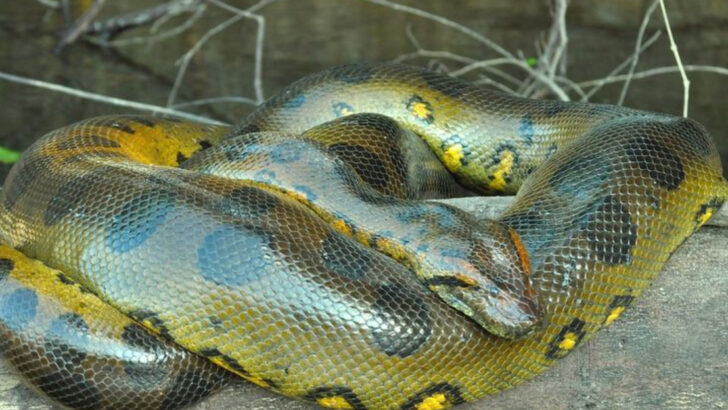South America doesn’t mess around.
This continent is crawling, slithering, and stalking with creatures that can paralyze, poison, or pounce—and sometimes all three.
From jungle shadows to riverbanks, danger is never far off. One wrong step in the Amazon, and you might meet a snake with venom strong enough to stop a heart. Take a dip in the wrong waters, and you could brush against a fish with teeth sharper than a knife.
But make no mistake—these animals aren’t villains. They’re survivors, predators, and essential pieces of the wild puzzle.
Want to meet the fiercest of the fierce?
Here are 15 of the most dangerous animals in South America—each with the power to kill, and the instincts to stay alive.
Jaguar
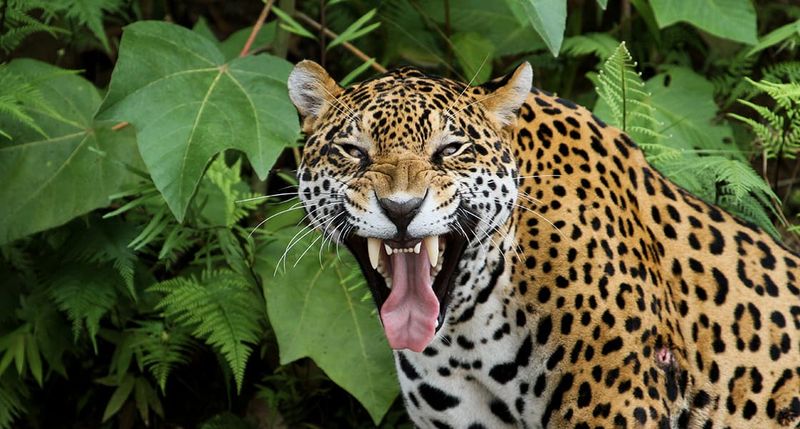
The jaguar, an apex predator, roams the Amazon with stealth and strength. Its rosette-patterned coat provides perfect camouflage in the dense jungle.
Jaguars are solitary hunters, often taking down prey much larger than themselves. Their powerful jaws can crush skulls, making them formidable predators. The jaguar’s presence is crucial for maintaining the ecological balance of its habitat. Despite their strength, jaguars face threats from habitat destruction and poaching.
Did you know? Jaguars are excellent swimmers and often hunt in the water. This majestic cat symbolizes the wild heart of South America.
Green Anaconda
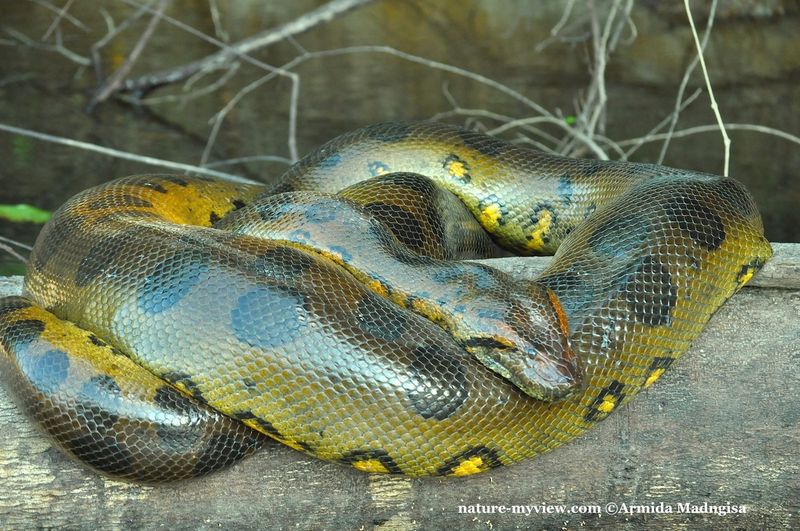
The green anaconda, South America’s heaviest snake, lurks in the waterways of the Amazon. Known for their immense size, these constrictors can grow over 20 feet long.
They suffocate prey by wrapping their muscular bodies around them, making escape impossible. While not venomous, their sheer strength poses a significant danger. Anacondas are most active at night, sliding through the water with silent stealth. These reptiles play a vital role in controlling the population of aquatic animals.
Fun fact: Green anacondas can stay submerged for up to ten minutes without resurfacing.
Poison Dart Frog

The poison dart frog, despite its small size, packs a potent punch. Found in the Choco Rainforest, these frogs sport bright colors as a warning to predators.
Their skin secretes toxins that can paralyze or kill, making them one of nature’s most effective deterrents. Indigenous tribes have used these toxins for hunting, coating blow darts to capture prey. Despite their danger, poison dart frogs are crucial for pest control in their ecosystems.
Surprisingly, their toxicity is derived from their diet, consisting of ants and termites. A vivid jewel of the rainforest.
Piranha
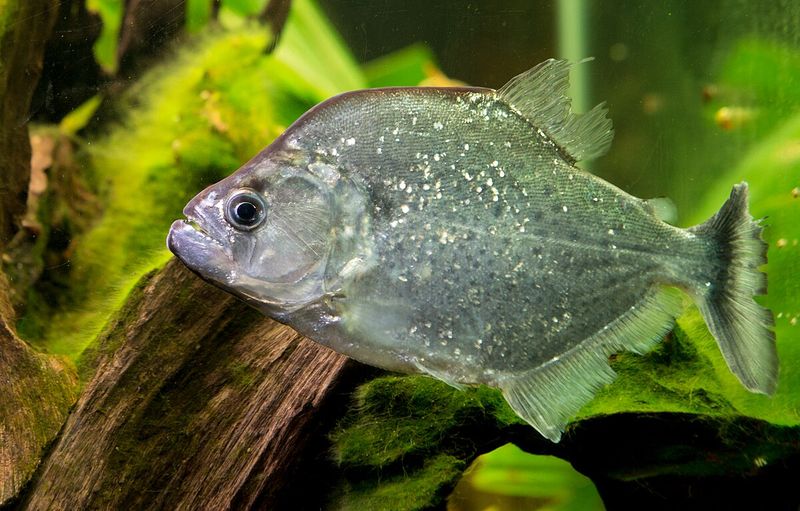
Piranhas, with their razor-sharp teeth, are synonymous with the Amazon’s treacherous waters. These carnivorous fish can strip flesh in minutes, and their feeding frenzies are legendary.
Often misunderstood, piranhas usually feed on insects and small fish. However, they can become aggressive during low water levels or food scarcity. Despite their fearsome reputation, piranhas are essential for river health, scavenging and keeping ecosystems clean.
Did you know? Piranhas are attracted to noise and movement, rather than the smell of blood. A formidable force in South America’s rivers.
Brazilian Wandering Spider
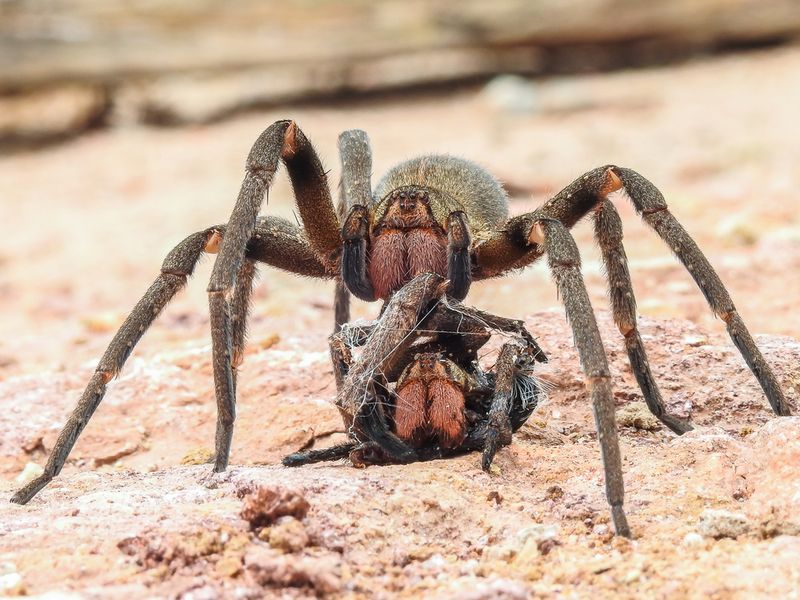
The Brazilian wandering spider, known for its aggressive nature, prowls the rainforest floor rather than spinning webs. Its venom is one of the most toxic, capable of causing serious harm to humans.
Unlike other spiders, it actively hunts its prey, making it unpredictable and dangerous. Their presence is a reminder of the rainforest’s hidden perils. In addition to their danger, these spiders contribute to controlling insect populations.
Interestingly, their venom is being studied for potential medical applications, including erectile dysfunction treatment. Nature’s blend of danger and utility.
Electric Eel

In the murky depths of the Orinoco River, the electric eel commands respect. Capable of generating up to 600 volts, it uses electricity to stun prey and navigate its dark environment.
These impressive creatures can grow up to eight feet in length, resembling elongated torpedoes. While not true eels, their power is undeniable. Electric eels play a vital role in their ecosystem by controlling fish populations.
Their hunting method is unique, relying on electrical discharges to incapacitate prey. A shocking encounter awaits those who venture too close.
Bullet Ant

The bullet ant, named for its agonizing sting, roams the Amazon forest floor. Known as the most painful insect sting, it feels like being shot, lasting up to 24 hours.
Despite their intimidating reputation, bullet ants are not aggressive unless provoked. They play a crucial role in their environment, aerating soil and controlling pest populations. Indigenous cultures use bullet ants in initiation rites, a testament to their pain threshold.
Curiously, the ants’ venom contains compounds of interest for medical research. A testament to nature’s intensity and complexity.
Bushmaster

The bushmaster, a formidable pit viper, is the largest venomous snake in the Americas. Found in tropical rainforests, these elusive creatures are both feared and respected.
Their potent venom attacks the nervous system, requiring immediate medical attention. Bushmasters are nocturnal, hunting small mammals with precision. Despite their danger, these snakes are reclusive, avoiding human contact whenever possible. They are an integral part of the ecosystem, controlling rodent populations.
Did you know? The bushmaster releases a pungent odor when threatened, earning it the nickname “mute rattlesnake.” A silent yet deadly guardian.
Giant Otter
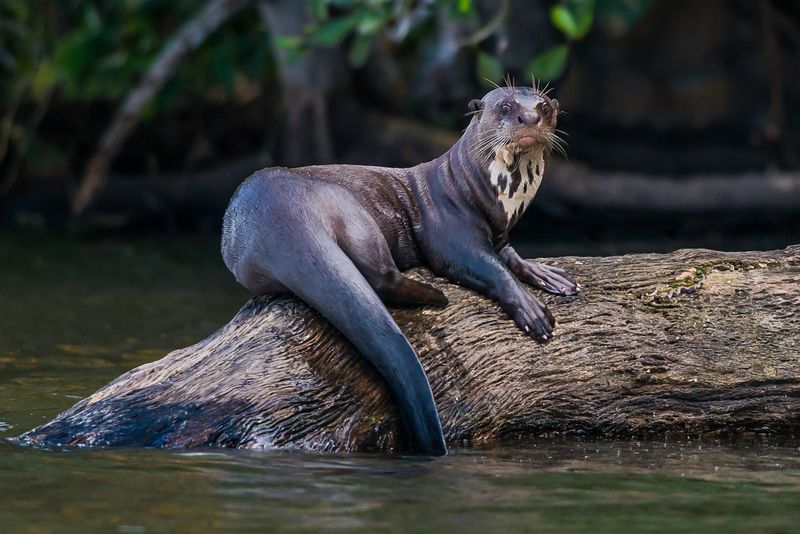
The giant otter, an apex predator of the Pantanal wetlands, is a formidable hunter. These social creatures live in large family groups, communicating with distinct vocalizations.
Their presence signifies a healthy ecosystem, as they control fish and crustacean populations. While playful in appearance, they defend their territory fiercely from intruders. Habitat loss and pollution threaten their existence, making conservation crucial.
Fun fact: Giant otters can consume up to 10 pounds of food a day! They are the energetic guardians of the wetlands, balancing playfulness with predatory prowess.
Fer-de-Lance

The fer-de-lance, known for its lethally quick strikes, is a viper of the Central American rainforest. Its venom is hemotoxic, causing tissue damage and severe pain.
Despite its danger, the fer-de-lance plays a crucial role in controlling rodent populations. They are highly adaptable, thriving in diverse habitats. These snakes are often encountered due to their preference for human-disturbed areas. Caution is advised when traversing their territory.
Curiously, their young are born with bright tails to attract prey, a unique survival strategy. A hidden threat amid the vibrant rainforest.
Harpy Eagle
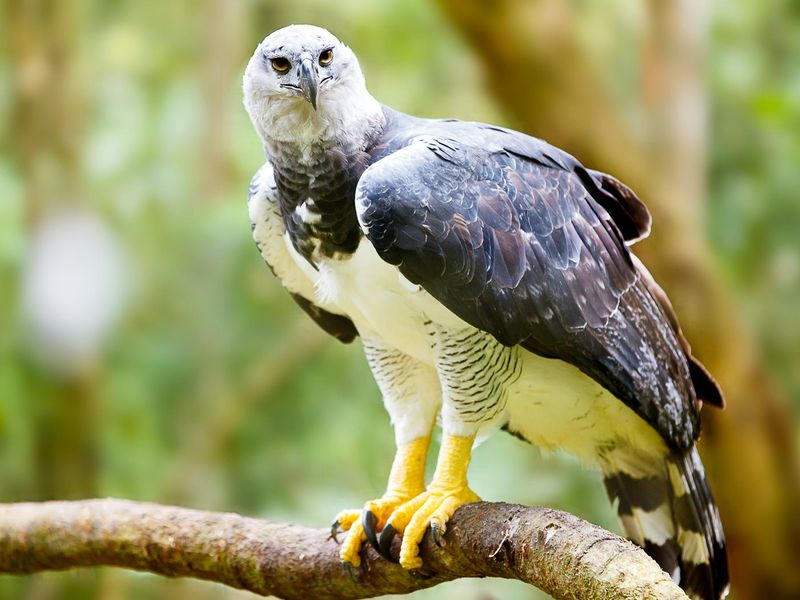
The harpy eagle, a symbol of power and grace, dominates the skies over the Amazon. Its talons are among the largest of any bird, capable of snatching up monkeys and sloths.
These apex predators play a vital role in maintaining the ecological balance. Harpy eagles are solitary hunters, requiring vast territories to thrive. Deforestation poses a significant threat to their survival, leading to conservation efforts.
Did you know? Harpy eagles build massive nests that can weigh over 400 pounds! A majestic sentinel of the rainforest’s treetops.
Caiman

Caimans, the stealthy reptiles of South America’s waterways, are closely related to alligators. Their ambush hunting style and powerful jaws make them top predators.
Caimans are crucial for maintaining the balance of aquatic ecosystems by controlling fish and small mammal populations. Despite their fearsome appearance, they are often hunted for their skins, posing a threat to their populations.
These reptiles display remarkable adaptability, thriving in diverse habitats from rivers to swamps. A creature of ancient lineage, caimans embody the untamed spirit of South America’s rivers.
Bull Shark
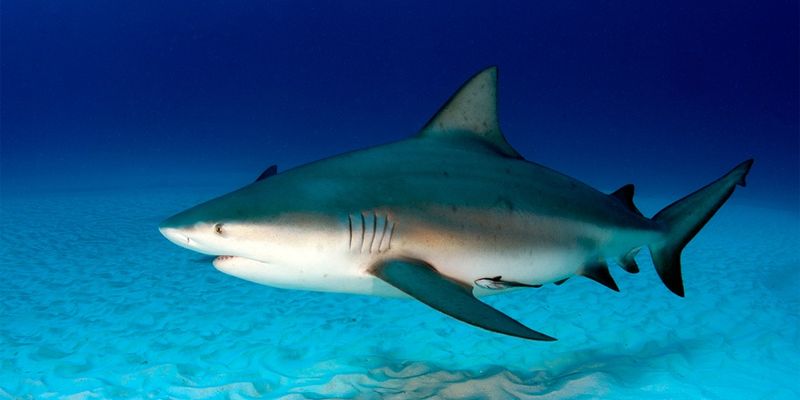
The bull shark (Carcharhinus leucas) earns its place among South America’s most dangerous animals thanks to its aggressive nature and unusual ability to thrive in both salt and freshwater.
Found in coastal regions, estuaries, and even rivers like the Amazon, the bull shark is responsible for more attacks on humans than most other shark species. Its stocky build, unpredictable behavior, and tendency to swim in shallow waters make encounters more likely—and more dangerous.
Unlike most sharks, the bull shark can travel far inland through river systems, bringing its powerful bite and fearless attitude where people least expect it.
Vampire Bat
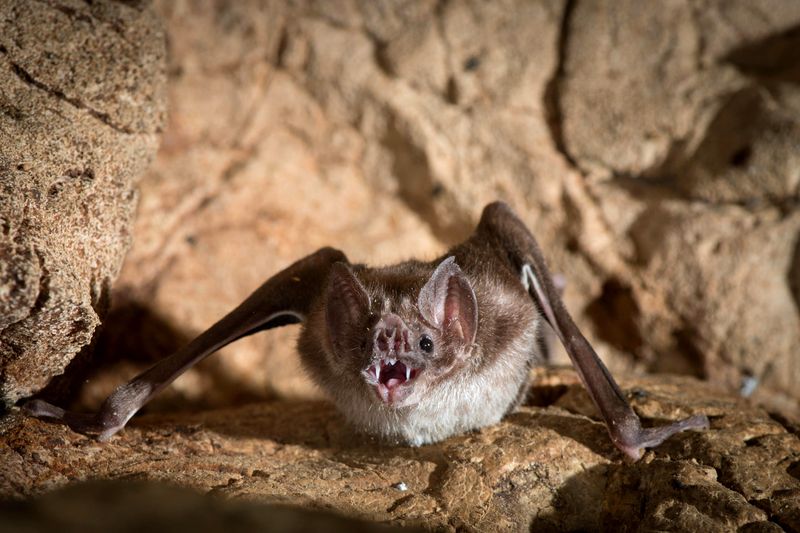
The vampire bat, a creature of myth and reality, haunts the night skies of the Amazon. Unlike other bats, it feeds on blood, using heat sensors to locate prey.
Their razor-sharp teeth make a quick incision, allowing them to lap up the blood. While feared, vampire bats play a role in controlling livestock populations. They are highly social animals, living in colonies and sharing food. Rabies transmission is a concern, prompting close monitoring.
Did you know? Vampire bats can run on the ground, a unique trait among bats. A night stalker with a notorious reputation.
Chilean Recluse Spider
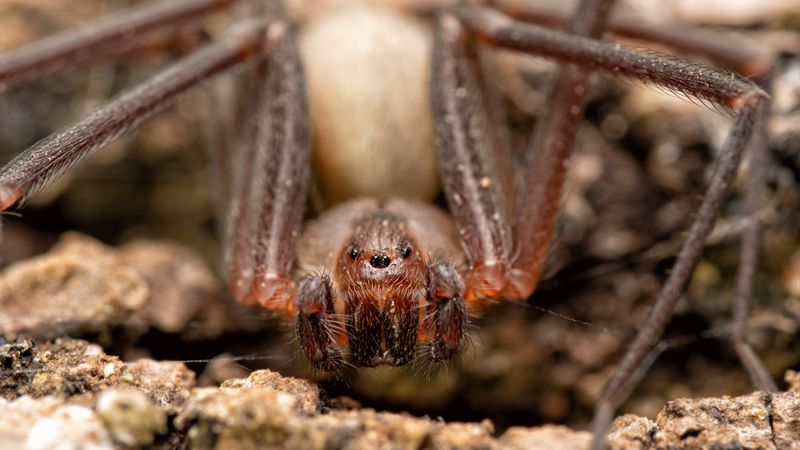
Beware the Chilean Recluse Spider, an innocuous-looking arachnid with venomous potential. Its bite, often painless at first, can lead to severe skin lesions and systemic reactions.
This spider’s modest size belies its potency. Found primarily in South American homes, it prefers dark, undisturbed areas. Why is it so feared? Its venom contains a protein-destroying enzyme, capable of causing necrosis. Although bites are rare, their effects can be grave. Interestingly, only a small percentage result in significant harm.
Still, the looming threat is enough to earn it a notorious reputation. Resilient and reclusive, it survives in varied conditions.

